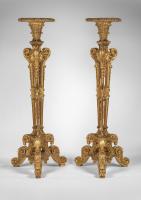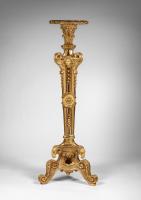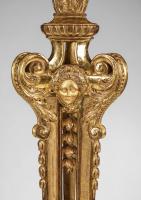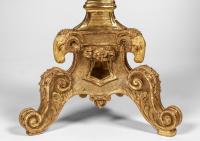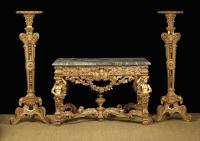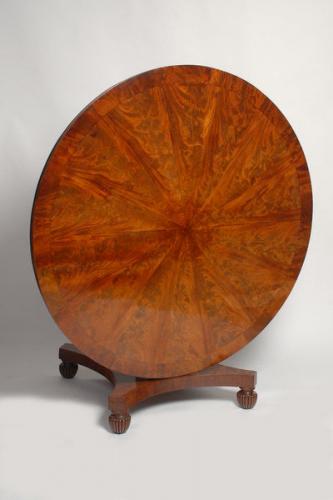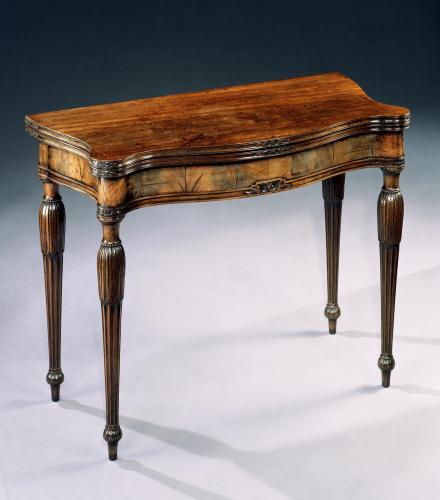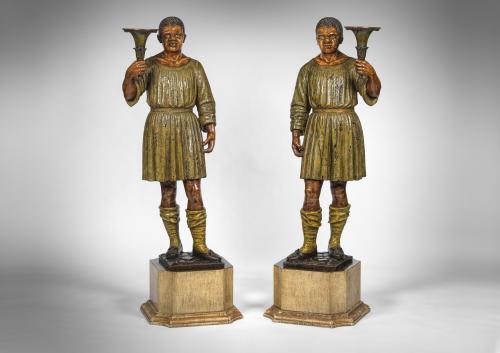
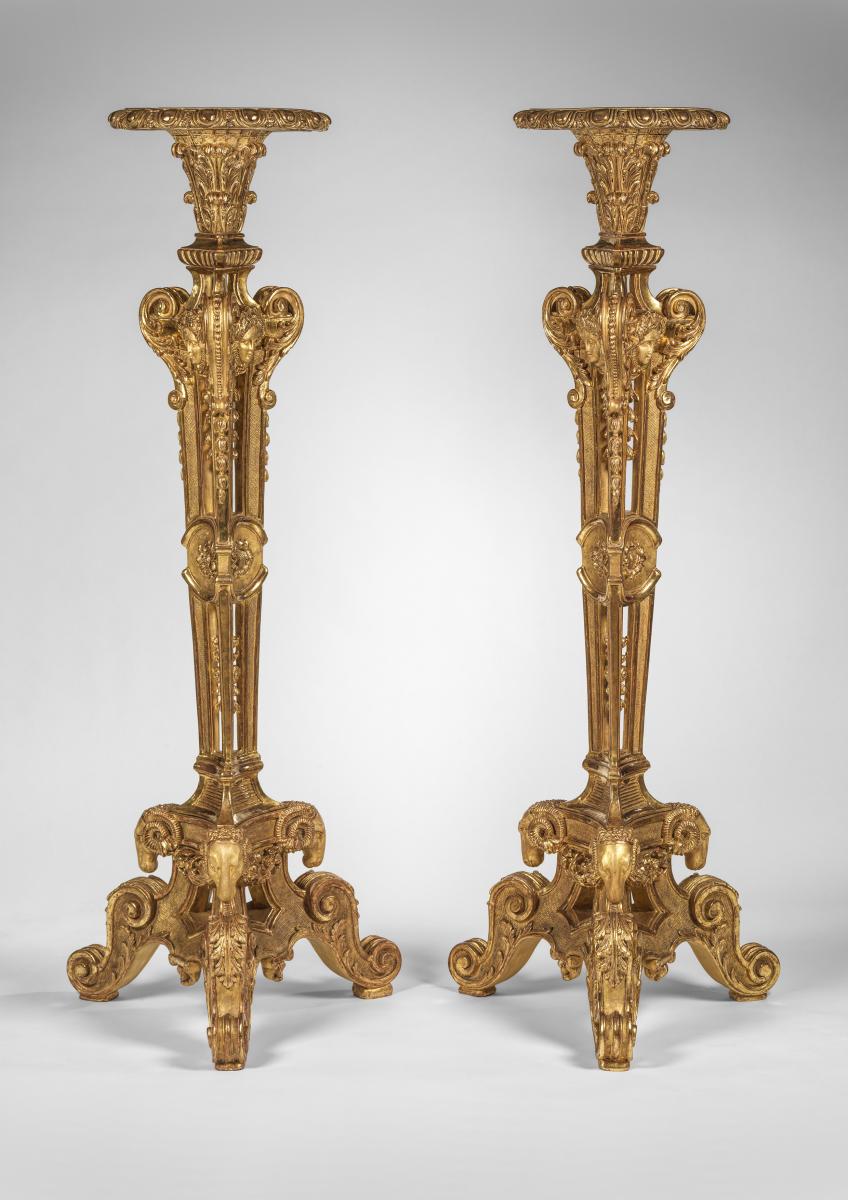
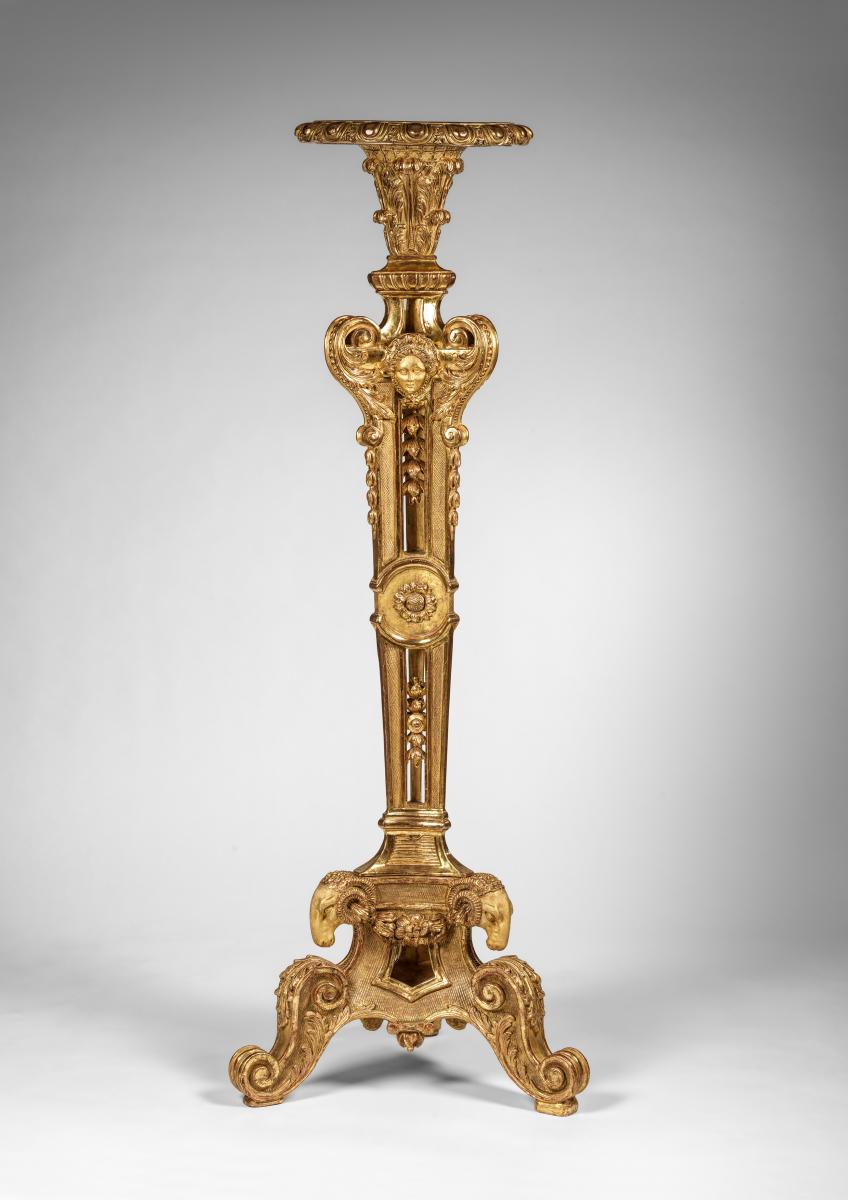
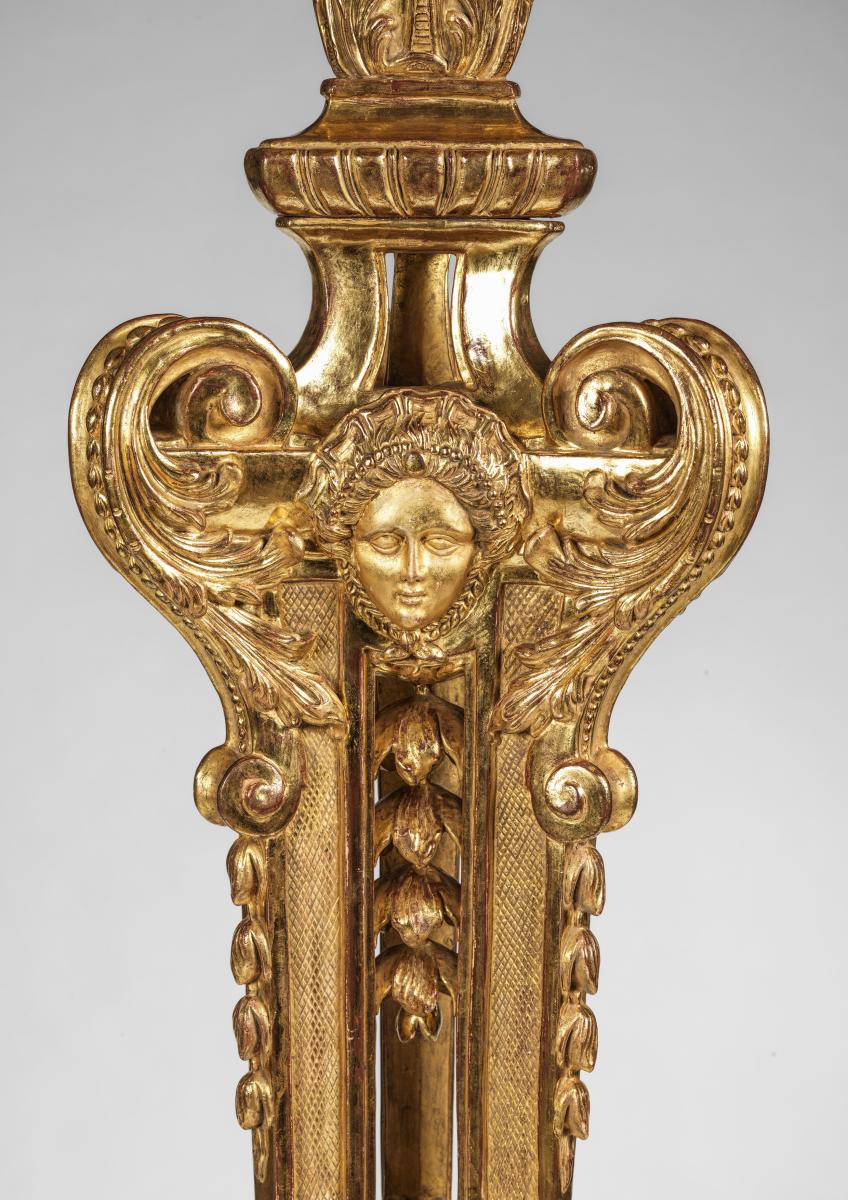
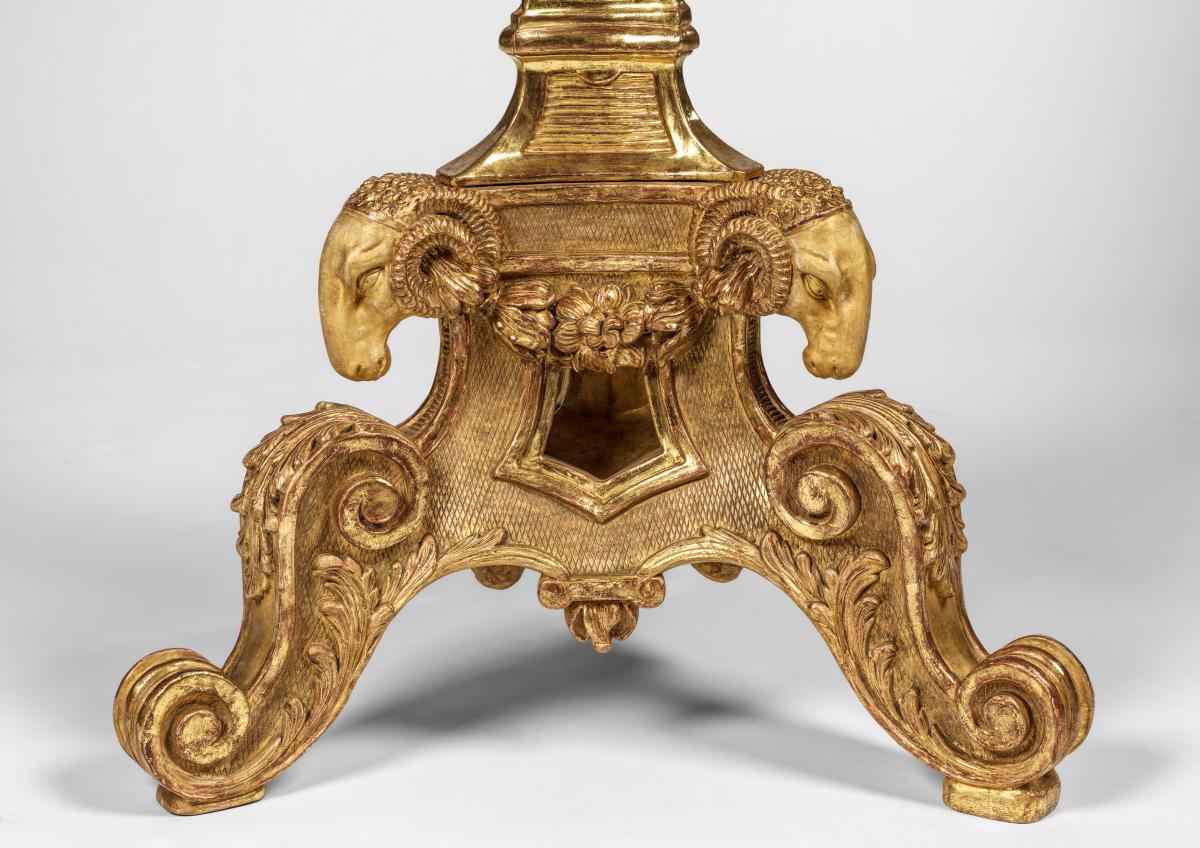
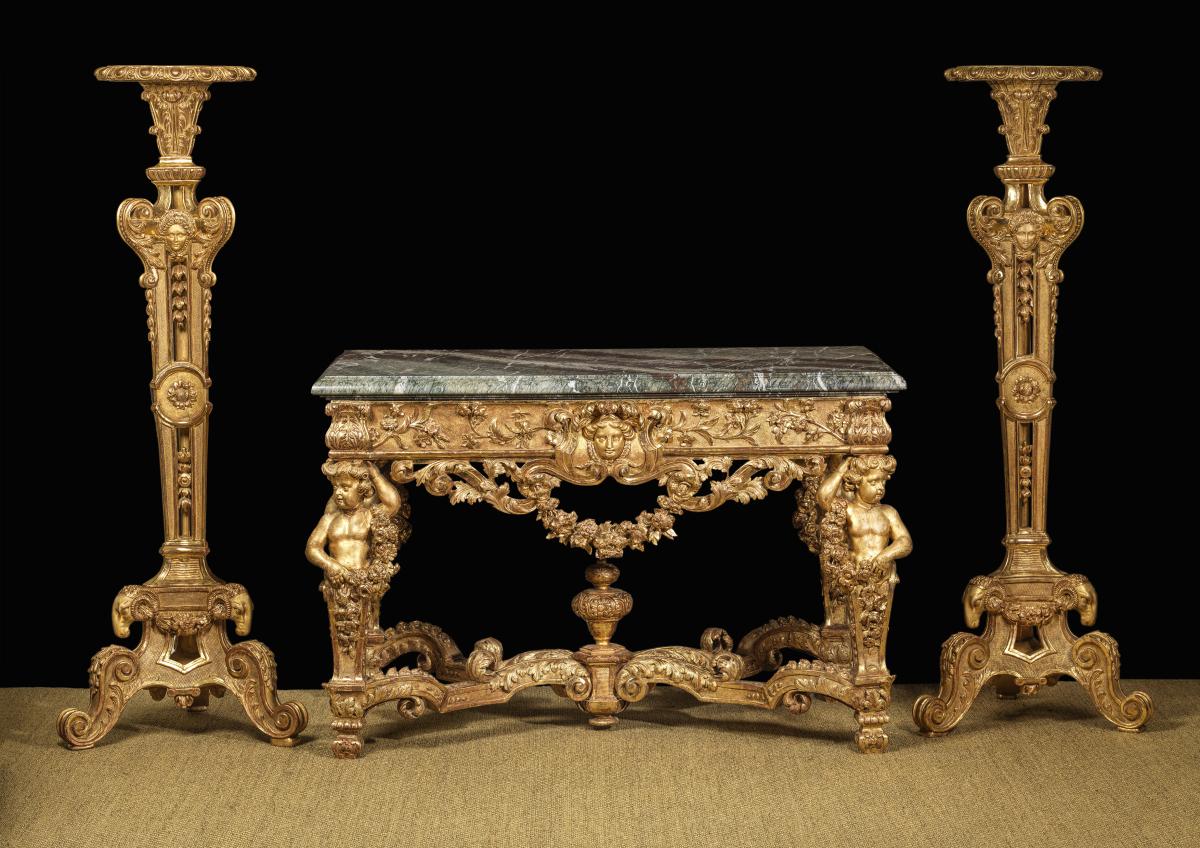
Price on application
This object is eligible for a Certificate of BADA Provenance
The BADA Standard
- Since 1918, BADA has been the leading association for the antiques and fine art trade
- Members are elected for their knowledge, integrity and quality of stock
- Our clients are protected by BADA’s code of conduct
- Our dealers’ membership is reviewed and renewed annually
- Bada.org is a non-profit site: clients deal directly with members and they pay no hidden fees
A Very Fine and Rare Pair of William and Mary Giltwood Torcheres Attributed to Jean Pelletier for the Duke of Montagu, Circa 1700.
The circular tops resting above a tripartite tapered pierced column headed by acanthus scrolls and Minerva masks, enclosing hanging flowers between a central section with carved tournesol roundels carved with sunflowers, on a tripod base with ram’s heads and foliate swags ending in double-scrolled feet.
Provenance:
Due to these torcheres being made in Deal and not in oak it is therefore almost certain that they were made in England and not in France. Apart from the giltwood torcheres made for William III at Hampton Court, English torcheres of this period are extremely rare. William III commissioned from Pelletier a set of eight, a set of four and a pair of torcheres to furnish William III’s state apartments at Hampton Court Palace which were delivered between 1699 and 1702.
The fact that this pair have the sunflower which was the emblem for Louis XIV indicates a connection with the King of France. The Duke of Montagu had been Ambassador to the King and was a great admirer of Louis XIV and even went so far as to build Boughton, his country residence in the style of Versailles. It is therefore possible to connect these torcheres with Montagu as nobody else in England is likely to have wanted to have an emblem associated to the French King Louis XIV. We also know that Montagu ordered torcheres from Pelletier which in the 1709 inventory of Montagu House, are described as “a pair of large guilt stands”. Sadly the inventory does not give measurements to any of the stands that are mentioned so it is impossible to be able to confirm the attribution.
Jean Pelletier (1681 – 1705)
The Pelletier family of carvers and gilders left France in the 1680’s probably to escape persecution as Huguenots and settled in Amsterdam. By 1682 Jean Pelletier was established in London and by the end of the decade his two sons Rene and Thomas, both active until 1712 had joined him. Their introduction to Royal service was due to the patronage of the Francophile Duke of Montagu, the courtier responsible, as Master of the Great Wardrobe, for the furnishing of all Royal Palaces. Montagu held office from 1671 – 1685 and from 1689 – 1709. For tables, mirrors and stands – the principal furniture types in which they specialized – the Pelletier’s drew heavily on the designs of French contemporaries employed by Louis XIV; the engraved furniture of Jean Le Pautre (1618 – 1682) and his son Pierre (1660 – 1744). Other known examples of furniture by Pelletier which were commissioned to
furnish William III state apartments at Hampton Court are two pairs of tables for the Queen’s Gallery at Hampton Court and a single table made for Queen Anne.
1st Duke of Montagu (1638-1709)
The 1st Duke was the former Ambassador to the court of Louis XIV at Versailles and Master of the Royal Wardrobe to Charles II and William and Mary. He rebuilt Montagu House in Bloomsbury for the second time after the house was burnt down in 1686. The House was
then rebuilt to the designs of an otherwise unknown Frenchman called Pouget. Montagu House was by some margin the grandest private residence constructed in London in the last two decades of the 17th century and William III after visiting in 1689 regarded Montagu’s London home as a Palace. The walls of the principal rooms were decorated with mythological scenes by the leading French painter Charles de Lafosse and over fifty flower paintings were purchased from Louis XIV flower painter, Jean Baptiste Monnoyer. Montagu owned the Mortlake Tapestry Manufactory and so many of the rooms were lined with tapestries. Large-looking glasses in glass or silver frames, and marble tables with gilt frames and accompanying candlestands, reflecting French influence are listed in the 1709 inventory.
In 1733 Bloomsbury began to decline gently from a fashionable aristocratic district to a more middle-class enclave, and the 2nd Duke of Montagu abandoned his father's house to move to Whitehall. He built himself a more modest residence and some of the contents were moved to this new London House. The remainder of the contents were distributed to Montagu’s other houses, Beaulieu in Hampshire, Boughton in Northamptonshire, Ditton in Buckinghamshire and their villa in Blackheath. Montagu House in Bloomsbury was sold to the Trustees of the British Museum in 1759 and was the home of that institution until it was demolished in the 1840s to make way for larger premises.
Dimensions
61 x 51 x 160.5 HighThe BADA Standard
- Since 1918, BADA has been the leading association for the antiques and fine art trade
- Members are elected for their knowledge, integrity and quality of stock
- Our clients are protected by BADA’s code of conduct
- Our dealers’ membership is reviewed and renewed annually
- Bada.org is a non-profit site: clients deal directly with members and they pay no hidden fees


